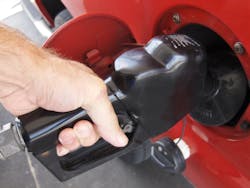AAA: National U.S. Gasoline Price Average Continues Slide
Drivers this year paid the second lowest gas prices for Thanksgiving since 2008, and the national average has steadily dropped days ahead of Wednesday’s OPEC meeting in Vienna, Austria. During the meeting, OPEC is expected to carve out the details for a production cut which could potentially result in an increase in global oil prices, though the details of the agreement are still unclear. Today’s average price of $2.13 per gallon is down one cent per gallon for the week, seven cents over the last month and is only nine cents more compared to a year ago.
West Coast
Gas prices on the West Coast remain some of the highest in the nation, with six out of ten of the nation’s most expensive retail markets located in this region: Hawaii ($2.85), California ($2.67), Washington ($2.60), Alaska ($2.60) and Oregon ($2.42). That being said, prices in the region continue to decrease ahead of this week’s OPEC meeting.
Rockies
Pump prices in the Rocky Mountains have remained relatively stable compared to other markets due primarily to the fact that there have been few regional disruptions to production in recent months and their geographic location. Being in the center of the country helps to insulate the region from coastal price swings. Barring unforeseen production issues, prices should continue to drop heading into the end of the year.
Great Lakes and Central States
Pump prices in the Great Lakes region continue to be the most volatile in the nation. This is a product of some refinery issues that have limited production at some facilities. While prices in recent weeks have been a mixed bag of increases and decreases, regional prices over the past week have moved mostly lower: Ohio (-6 cents), Indiana (-5 cents), Michigan (-3 cents), Minnesota (+3 cents) and Wisconsin (+4 cents). The volatility in the region has been pressured by operations at the BP refinery in Whiting, Ind. (the region’s largest facility), which has been undergoing planned maintenance that is set to wrap up at the end of the month.
Prices for drivers in the Central United States remain some of the cheapest in the country. Five states in the region feature in the top-15 lowest: Missouri ($1.88), Oklahoma ($1.89), Arkansas ($1.90), Kansas ($1.90) and Minnesota ($1.98).
Mid-Atlantic and Northeast
Prices in the Mid-Atlantic and Northeast have moved lower over the past week due to high supply and the price of crude oil. Despite the decreases, three states in the region are featured prominently on the list of top-10 most expensive markets in the nation: Washington, D.C. ($2.41), New York ($2.36) and Pennsylvania ($2.35). The latest EIA report shows that East Coast gasoline stocks increased to 59 million bbl which is about 700,000 bbl more than reported this same time last year.
South and Southeast
Drivers across the South and Southeast still make up the bulk of those paying pump prices below $2 per gallon. Despite some recent refinery issues in the region, six states still place in the top-10 cheapest states in the nation: Texas, Mississippi, South Carolina, Alabama, Tennessee and Louisiana. The U.S. Gulf Coast is the largest refining region in the nation, so even with some recently reported problems, the area is less susceptible to price spikes from limited disruptions.
Oil Market Dynamics
Doubts about the Organization of the Petroleum Exporting Companies’ ability to solidify a deal to cut oil production continued as reports of tension between Saudi Arabia, Iran, Iraq and non-OPEC member countries persisted over the weekend. Saudi Arabia’s oil minister left talks Sunday and mentioned the idea that OPEC members may leave the November 30 meeting in Vienna without a deal causing crude oil market prices to drop. Analysts will await confirmation that the cartel can come to an agreement to reduce production and the terms of each country’s participation. WTI opened last week’s formal trading posting gains but closed out Friday’s formal trading session on the NYMEX down $1.90, settling at $46.06 per barrel.
